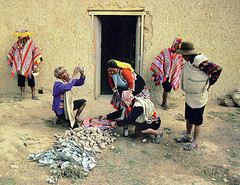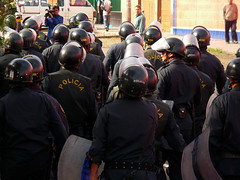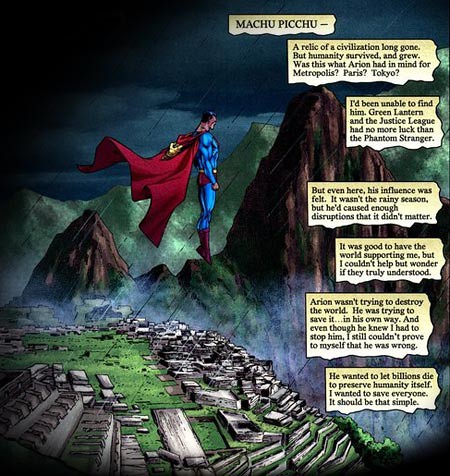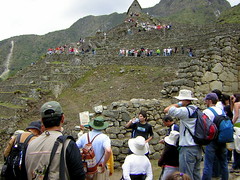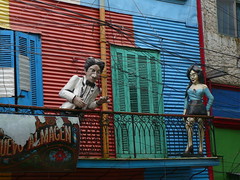Poor people, Historic buildings
I still haven’t gotten used to the fact that in Peru the poor are the ones who live in the oldest, most historic and most culturally valuable buildings in the country, and in some cases most of South America.
It’s still strange to me that some of the most run-down, rough and poorest neighbourhoods are also the oldest, and that they are falling apart and no-one seems to care.
What’s strange to Peruvians, especially those who live in these buildings that can be hundreds of years old, is that in most other countries these buildings would be snapped up by the richest of the rich and be worth millions if not tens of million of dollars.
Here though they are decaying, abandoned and occupied by those who have no-where else to go. Not being able to pay for maintenance of any kind, soon all these buildings will be gone.
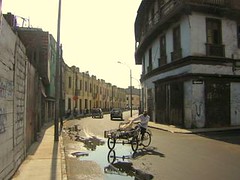 |
This street in the area of Lima known as the Barrios Altos used to house the wealthy upper-middle classes and would once have been busy with horses and carts ferrying the residents to and from the nearby city centre. Now it lays almost in ruins. If you continue walking straight ahead you will reach the Quinta Heeren, in the World Monument Fund’s top 100 most endangered buildings list. |
 |
Lima’s incredibly famous balconies, an integral part of the city’s history, are collapsing wherever you look. Originating from the Moorish customs of some Spanish immigrants, there’s nothing more important to preserve in Lima’s centre. Luckily, closer to the city’s Plaza de Armas, some of these balconies look destined to be saved as the Government and private investors finally managed to find funds to restore a few of the buildings. |
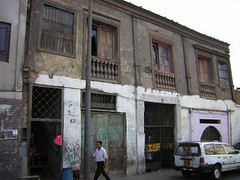 |
A street leading to the river front would be prime real estate elsewhere, but not here, not far behind Peru’s congress building. This building may only be a hundred years old or so, but 5 minutes walk from the river and the centre of Government; it’s not immediately easy to see what could have happened to this area of the city. |
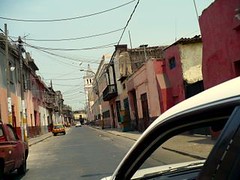 |
In Rimac, what was once the centre of the city’s night life and an important cultural centre is now ravaged with poverty and crime. Long gone are the bustling streets of this always-working class neighbourhood the other side of the river – Lima’s wealthy now never come to party. Buildings as historic as those as in central Lima and older than those in the Barrios Altos fall apart on a daily basis. |
 |
More decay in Rimac. There’s probably no saving this old balcony. In fact, it’s near impossible to find a building that wouldn’t be legally condemned if inspected. |
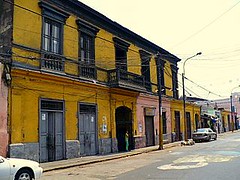 |
This beautiful old building, painted in my favourite Limeño colour, is also in Rimac. It’s doing all right for the moment but with no maintenance, how will it be holding up in 20 years? |
 |
When the rich pulled out of the central areas, those mentioned above, they moved to new up-and-coming areas such as Breña, 20 minutes walk away. But here too, buildings less than 100 years old are now abandoned, cursed with for-sale signs that will hang until the day they collapse. |
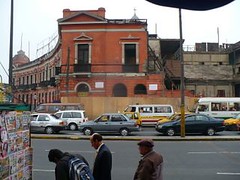 |
No million-dollar price tag on this Breña building. When it collapsed not so long ago it was condemned. The 4 other buildings of the same age and design at the other end of the junctions are on the verge of going too. |
Tags: architecture, barrios altos, breña, colonial, historic buildings, lima, rimac



![Fujimori’s mega-trial draws to a close [Featured]](http://newsimg.bbc.co.uk/media/images/44791000/jpg/_44791276_fujimori_afp226b.jpg)
